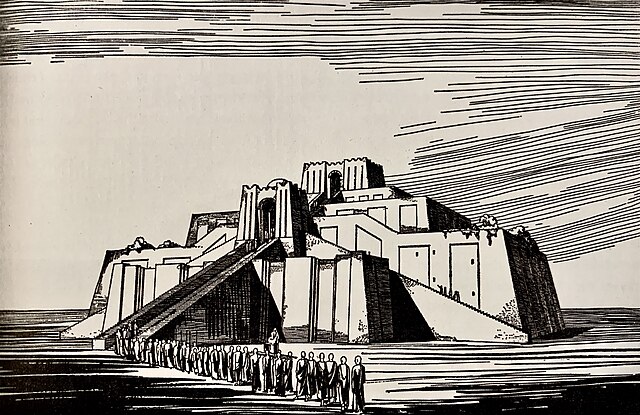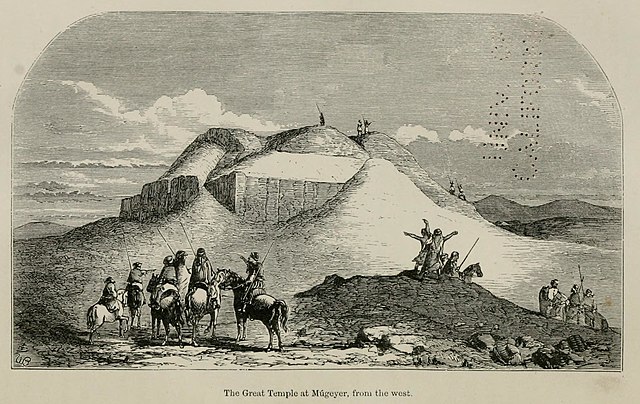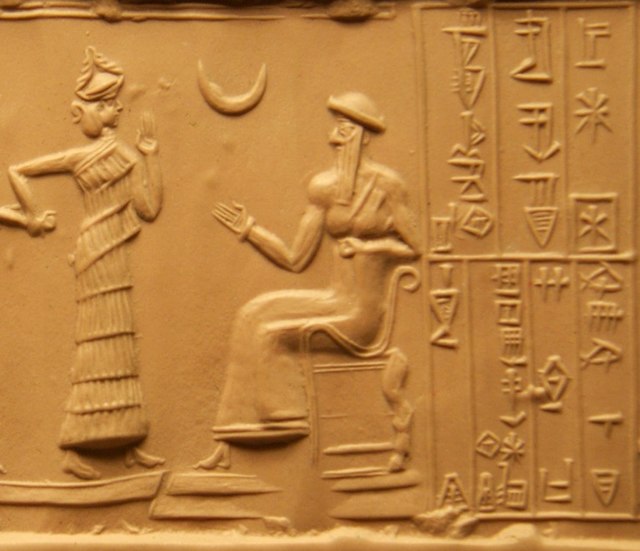The Ziggurat of Ur is a Neo-Sumerian ziggurat in what was the city of Ur near Nasiriyah, in present-day Dhi Qar Province, Iraq. The structure was built during the Early Bronze Age but had crumbled to ruins by the 6th century BC of the Neo-Babylonian period, when it was restored by King Nabonidus.
Partially reconstructed facade and the access staircase of the ziggurat. The actual remains of the Neo-Babylonian structure can be seen at the top.
Drawing of the Ziggurat of Ur, Iraq, by Marjorie V. Duffell for Leonard Woolley, 1937
William Loftus's sketch of his discovery of the ziggurat
U.S. Soldiers from the 17th Fires Brigade make their way up the reconstructed stairs of the Ziggurat of Ur, 2010.
The Third Dynasty of Ur, also called the Neo-Sumerian Empire, refers to a 22nd to 21st century BC Sumerian ruling dynasty based in the city of Ur and a short-lived territorial-political state which some historians consider to have been a nascent empire.
Utu-hengal, Lugal of the Sumerian city of Uruk, praying for victory against the Gutian king Tirigan. 19th century illustration.
Iddin-Sin, King of the Simurrum. The Simurrum, a mountain tribe, were vanquished by the armies of the Third Dynasty of Ur, c. 2000 BC (detail)
Enthroned King Ur-Nammu, founder of the Third Dynasty of Ur c. 2047 BC, on a cylinder seal. His name appears vertically in the upper right corner (𒌨𒀭𒇉).
The Lament for Ur, commemorating the fall of Ur to the Elamites. Louvre Museum.








